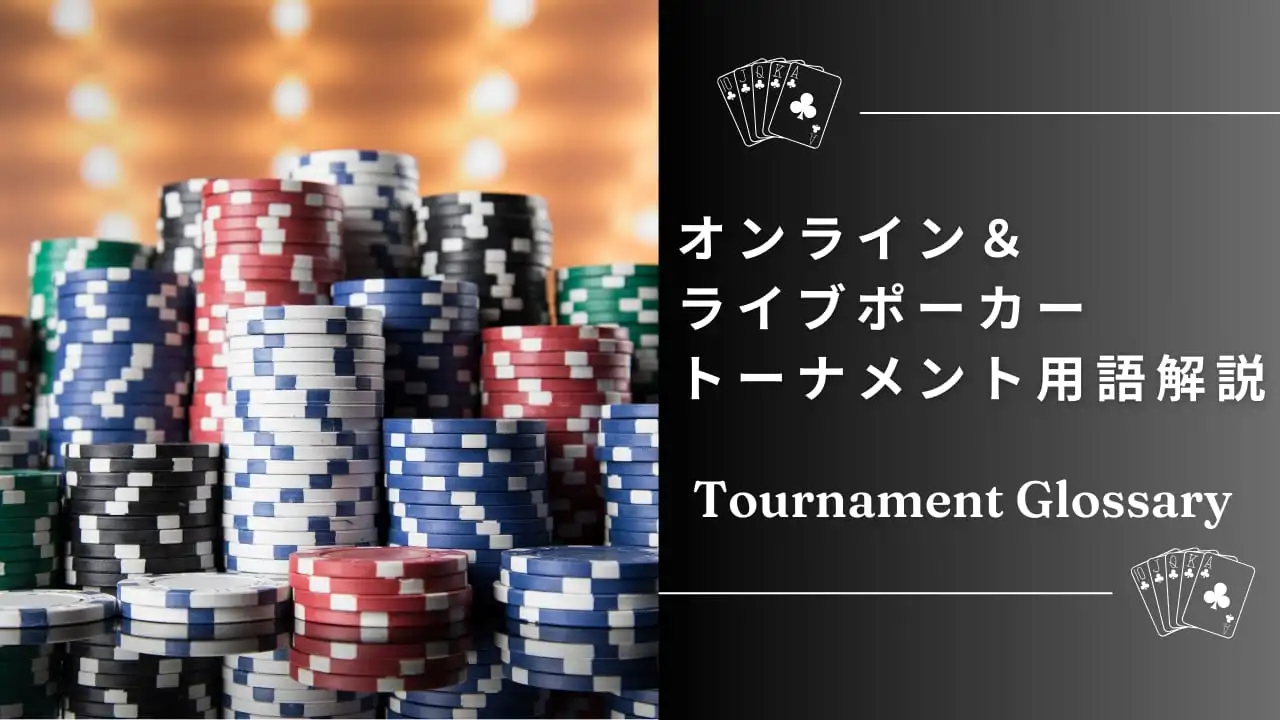Poker tournaments—especially online—are filled with unique terms that don’t usually appear in cash games. From “bubble” to “rebuy” and “ITM,” understanding this specialized vocabulary is essential for beginners who want to succeed. This guide breaks down all the key terms in a way that’s easy to understand and apply, so you can confidently join your next tournament.
Basic Poker Tournament Terms
Entry
The buy-in fee required to participate in a tournament. It typically contributes to the prize pool.
Example: “The entry fee for this tournament is $50.”
Rebuy
The option to buy more chips after losing your initial stack during a specific period.
Note: A tournament that allows rebuys is called a Rebuy Tournament.
Add-on
An option to purchase extra chips after a certain point in the tournament, often after the rebuy period ends.
Example: “You can’t rebuy anymore, but you can still get an add-on.”
Ante
A small forced bet each player contributes to the pot, usually introduced in the middle stages of a tournament.
Tip: Antes increase pot sizes and encourage more action.
Blinds
Mandatory bets used to drive the action forward in tournaments.
- Small Blind (SB): Paid by the player to the left of the dealer.
- Big Blind (BB): Paid by the player to the left of the small blind.
Blinds increase at regular intervals as the tournament progresses.
Tournament Structure Terms
Round
A time-based phase in which the blinds and antes increase.
Example: “Blinds will go up to 500/1000 in the next round.”
Bubble
The point just before players reach the money. The last player to bust before payouts begin is the Bubble Boy.
Tip: Play often slows down here as players tighten up to avoid elimination.
In the Money (ITM)
Reaching a placement where you win prize money.
Example: “The top 50 finishers are ITM.”
Final Table
The last table where the remaining players compete for the top prizes.
Note: This stage often gets broadcast or live-streamed and is considered the tournament highlight.
Strategy and Playstyle Terms
Short Stack
Having a small chip stack compared to the average.
Tip: Push-or-fold strategies are commonly used in short-stack situations.
Deep Stack
Having a large number of chips, allowing for more flexible and strategic play.
Example: “This is a deep-stack tournament, so you can play more hands.”
Steal
Raising with a weak hand to try and win the blinds and antes uncontested.
Tip: Most effective from late position.
Snap Call
Calling a bet or all-in immediately without much thought.
Note: This can be a psychological tactic to throw off your opponent.
Online-Specific Tournament Terms
Multi-Table Tournament (MTT)
A tournament spread across multiple tables. As players are eliminated, tables are consolidated until the final table.
Sit & Go (SNG)
A small-scale tournament that starts as soon as all seats are filled.
Note: Great for quick sessions and beginner-friendly.
Bounty
A reward given for knocking out a specific player.
Example: “Earn $10 for each player you eliminate in this bounty tournament.”
Time Bank
Extra time allocated for making decisions during difficult hands.
Tip: Use your time bank wisely when facing tough spots.
Winning Tournament Strategy: Mental Game & Stack Management
To succeed in tournaments, strategy and mindset are just as important as knowing the rules. Let’s break down key strategies by tournament phase and stack size.
1. Adjusting Play Based on Tournament Phases
Early Stage (Entry to Pre-Bubble)
- Play tight and avoid unnecessary risks. Stick to premium hands like AA, KK, and QQ.
- Avoid marginal hands. Focus on building a solid foundation rather than chasing small pots.
- Observe opponents. Use this time to gather information on other players’ tendencies.
Middle Stage (Approaching the Bubble)
- Get aggressive. Take advantage of players tightening up near the money.
- Look for steal spots. With larger blinds and antes, even small pots can be valuable.
Late Stage (Final Table Chase)
- Adapt to the situation. Your stack size determines whether you should be aggressive or play cautiously.
- Exploit passive players. Many players play conservatively once ITM—capitalize on this with well-timed aggression.
2. Mastering Stack Size-Based Strategy
Short Stack (≤10 BB)
- Use push-or-fold strategy. Don’t waste chips on small raises.
- Broaden your shoving range based on position and urgency.
Middle Stack (10–30 BB)
- Utilize 3-bet shoves effectively, especially when facing steals.
- Avoid unnecessary chip leaks. Every chip counts at this stage.
Deep Stack (30+ BB)
- Maximize value through creative plays. Use speculative hands like suited connectors.
- Adjust raise sizes. Don’t bloat pots needlessly; stay in control.
3. Read Opponents and Take Control
Bubble Play Psychology
- Understand opponents’ fear. Most players tighten up to secure a payout.
- Use your big stack aggressively to steal blinds and antes.
Final Table Strategy
- ICM Awareness. Stack sizes impact pay jumps—play accordingly.
- Apply pressure on short stacks. Big stacks can leverage ICM pressure for chip gains.
Conclusion
Poker tournaments are dynamic and demand adaptive strategies at every phase. Key takeaways:
- Start tight and gather information.
- Shift to aggression in the middle and late stages.
- Adjust your strategy based on stack size.
- Observe opponents’ tendencies and exploit them.
Understanding the terminology and tournament flow gives you a strong edge—especially in online events where fast decisions are crucial. Use this guide to prepare and thrive in your next poker tournament!


